GRAND CANYON (Day 7 - part 4)
The number of people at the visitor center was unbelievable! It took a while but we eventually managed to find a spot. It turns out this was considered to be the busiest day of the year! We had just lucked out until now by having come in through the back way.
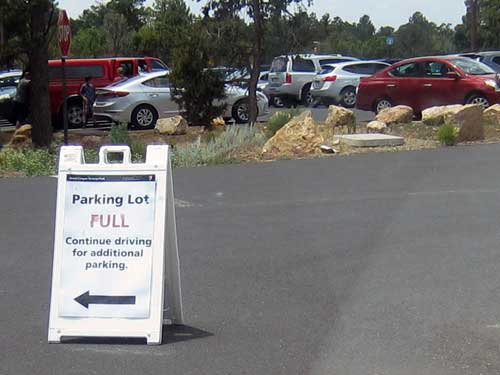



Learning the details of the various trails, as well as the perils...
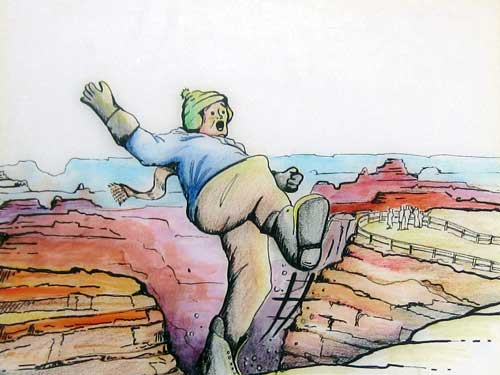
Images of what can happen to you
Some 700 people have perished in the canyon since the mid-1800's (although due to inconsistencies in the record, the real number is probably higher)... averaging about a dozen per year. Over the decades, there has also been a shift in what kills people. Most recently it's been "environmental deaths" (related to heat, dehydration, hypothermia) as well as more people falling within the canyon (as opposed to from the rims). Also on the rise were drownings among private boaters and suicides at the rims.
Other deaths include being crushed by rockfalls; diving from high places into the water and hitting the bottom; getting caught in recirculating currents; lunging out to try to catch something that was dropped (such as a hat); plane crashes or helicopter accidents; being hurried out of the way for another person to get a photo; dying from a heart attack from seeing a rattlesnake; jumping off the edge using parachutes that got tangled with each other; pretending to fall to scare someone and then actually falling; rock hopping to get the best picture; backing up too far to get the best picture; walking along the icy rim while intoxicated; and even being crushed by a falling mule.

Eeewww... now that's pretty graphic!

It was lovely and cool inside the visitor center!

We rested with a 22-minute movie: Grand Canyon, a Journey of Wonder
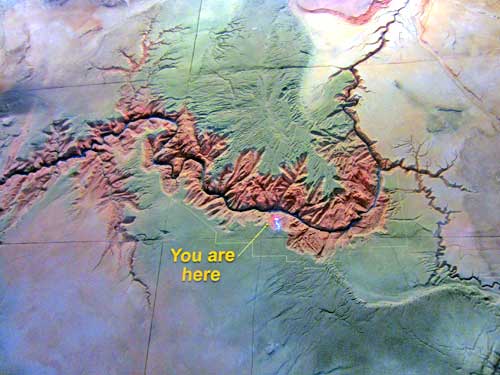

Surveying the canyon
The Colorado was a wild, silty river which some felt needed to be tamed. In 1923 the Birdseye Expedition set out to identify potential dam locations. Engineers and politicians wanted to control flooding, produce electricity, store water for drought years and provide water-based recreational opportunities. Geologists and topographers were sent out to identify all potential sites along the river. They proposed 7 dams as well as 22 several alternatives within the Grand Canyon. If built, the Colorado River would cease to flow freely through the canyon.
A battle raged between conservation of the park and construction of the dams. Unfortunately in 1966, even though the park won and no dams were allowed to be built inside the canyon… the Glen Canyon Dam was completed just 14 miles upstream, altering the river corridor forever.
While it did offer positives, such as more navigable river trips due to predictable tides, there were many unforeseen negatives:
- the dam prevents the natural cycle of annual flooding, allowing invasive plants to crowd out native ones
- the cold water released from the bottom of the reservoir inhibits native fish reproduction
- sediment that used to flow through the canyon (building up beaches and protecting archaeological sites by burying them) now remains trapped in Lake Powell


The Glen was one of the original wooden boats used by the 1921-3 expeditions.

In a side room was an amazing media project called The Canyon World. "Science On a Sphere" is a spherical projection system that presents high-resolution video on a suspended globe rather than on a flat screen. While it truly looks like the globe is slowly turning, it neither moves nor has any electronic parts. Surrounding the screen are four video projectors, each responsible for one quadrant of screen space. SOS was invented by Alexander E. MacDonald, a former director of the National Oceanographic and Atmospheric Administration (NOAA) Earth System Research Laboratory in Boulder, CO, in 1995.
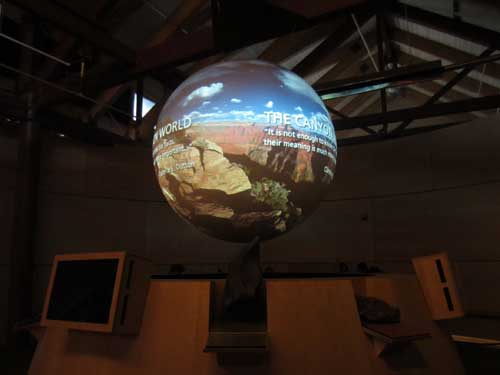

I made a quick dash out to nearby Mather Point for the views.
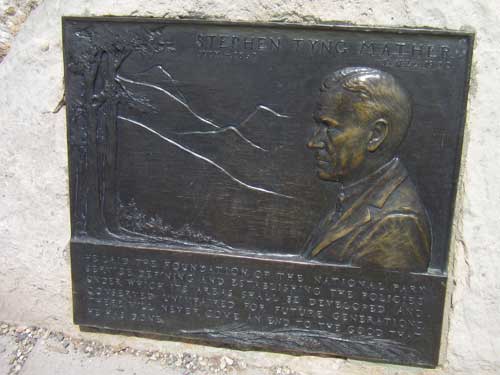
Stephen Mather was the first director of the National Park Service, an agency created within the Department of the Interior in 1916. After traveling through Europe in 1904, Mather became inspired to work to protect more scenic resources and natural areas in the US. He led a publicity campaign to promote the creation of the federal agency. During his time as director, he increased the numbers of national parks and monuments and established criteria for adding new ones.

Stephen Tyng Mather (1867- 1930)

A view through the trees of Mather Point

So cute but also potentially so harmful!
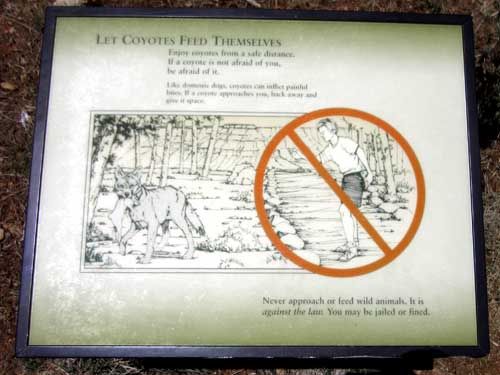
More signs to hopefully protect the local wildlife.

The point


The mighty (and murky) Colorado River

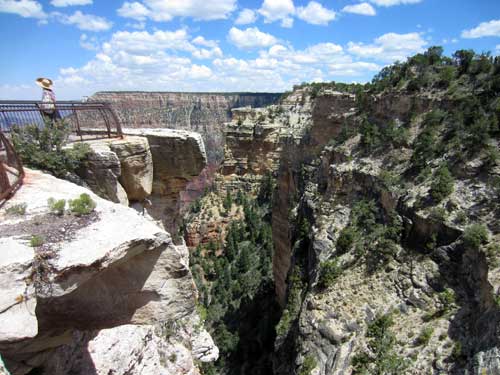
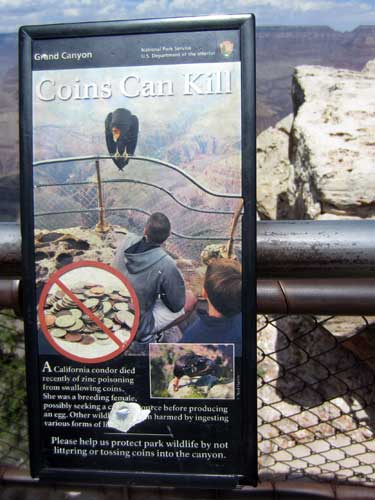
Apparently a California condor died from zinc poisoning due to swallowing too many coins.

Looking east along the rim at Yaki Point
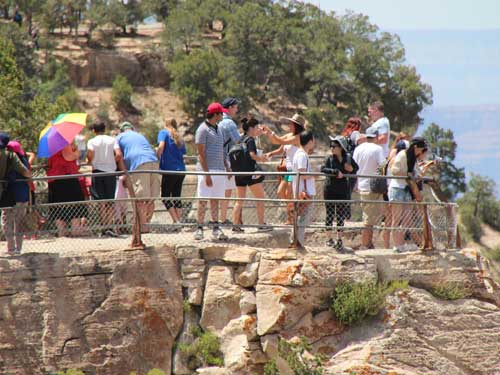
People for scale...

... on neighboring Yavapai Point to the west. Most of them behaved and remained behind the fences...

Others did not. Oh, but this doesn't look so bad, right?

How about now?

How about now?? Apparently these guys hadn't read any of the death statistics!

And here's how it begins at a young age.

Oh no... I'm not falling for it! I read all about you!
When we returned to the car, the parking lot was filled with people vulturing for a spot. A line of cars was backed up as well as we exited the park.


return • continue

